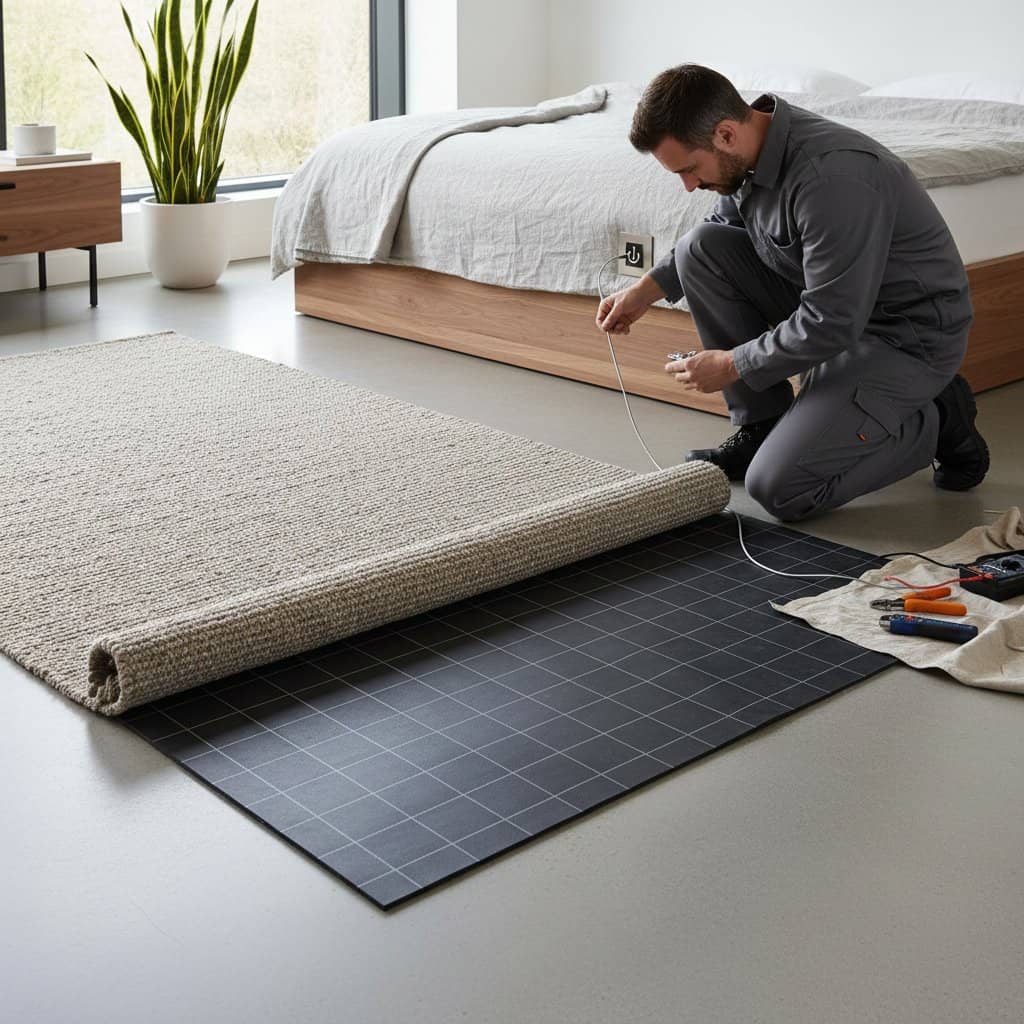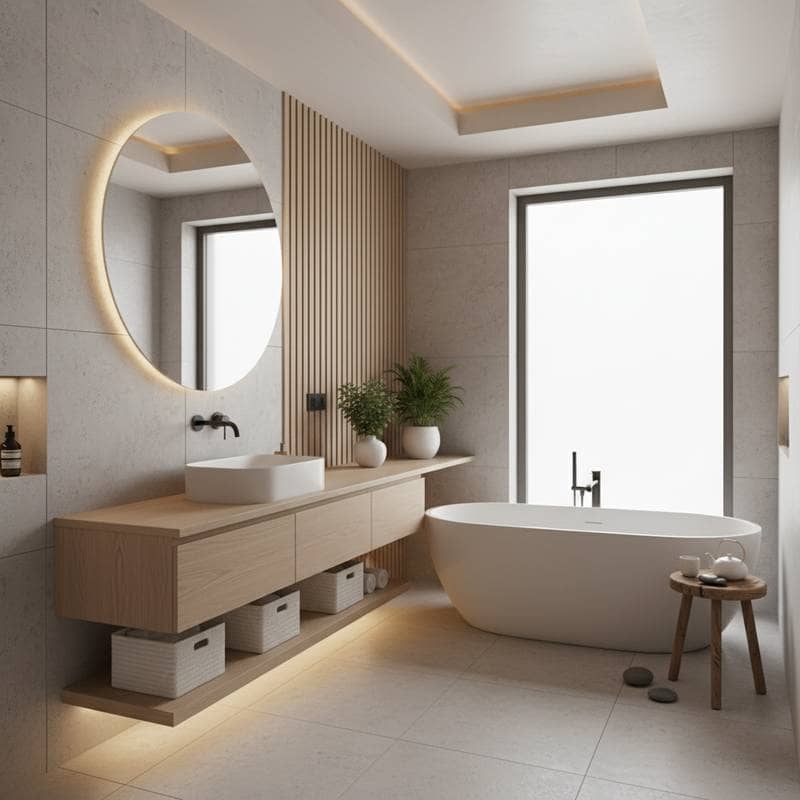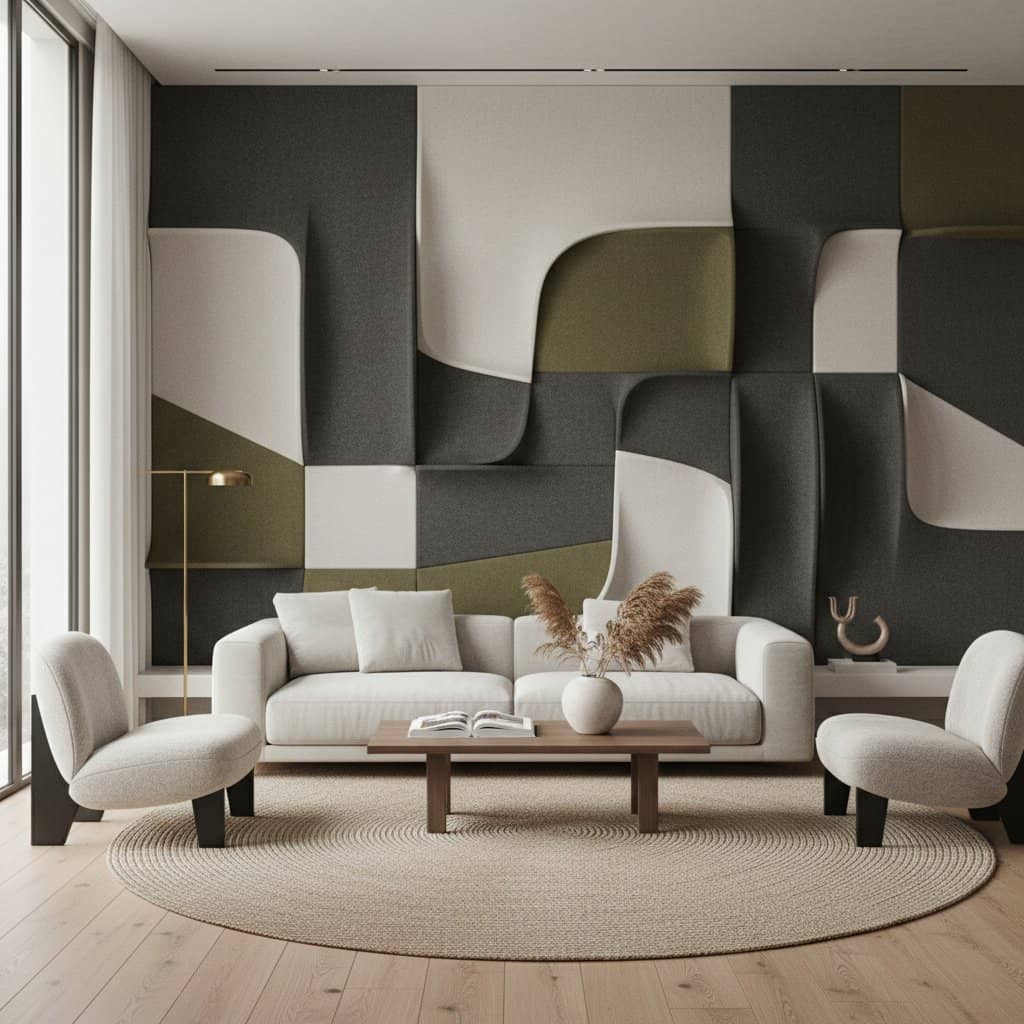Acoustic Panels: Integrating Style with Effective Sound Control
Noise can disrupt even the most thoughtfully designed home. For Megan and Luis, a creative couple who converted their open-plan loft into a combined home office and living area, tall ceilings amplified every sound into an unwelcome echo. During Zoom calls, voices resonated like announcements in a cavern. Their resolution arrived through acoustic panels, which now serve as both functional absorbers and aesthetic enhancements. These panels, available in vibrant colors, varied textures, and patterned arrangements, not only dampen sound but also harmonize with the surrounding decor.
Key Project Overview
- Setting: Urban loft apartment
- Challenge: Excessive echo, compromised audio quality, and an unsettled ambiance
- Resolution: Fabric-covered panels combined with wood slat wall accents
- Budget Spectrum: Moderate to elevated, varying by material selection and coverage extent
- Ideal Applications: Home offices, living areas, creative studios, or spaces requiring clear communication
Acoustic panels have advanced from utilitarian gray forms to versatile elements that integrate seamlessly, accentuate focal points, or establish a room's character. Options range from understated linen-covered versions that align with neutral walls to intricate wood frameworks that function as sculptural pieces, transforming sound management into an expressive design element.
Post-Installation: A Shift to Intentional Serenity
Installation of the panels altered the loft's atmosphere immediately. Discussions now carry naturally, and media playback avoids the distortion of reverberation. The introduction of layered, tactile surfaces improved sonic clarity while adding dimensional interest. Simple rectangular forms established a rhythmic pattern against the exposed brick, guiding visual attention toward the ceiling's height.
Megan observed, "We anticipated improved sound, but the overall sense of calm surprised us." Effective sound management impacts perception and relaxation alike. Spaces that capture rather than reflect noise foster mental ease. The visual harmony of a curated interior now aligns with the sensory experience of occupancy.
Selecting Materials That Align with Your Aesthetic
Acoustic solutions need not appear utilitarian. Contemporary designs incorporate inviting, organic materials that contribute to the narrative of the interior.
- Minimalist Approach: Select panels in subdued hues matching existing wall colors for subtle integration, allowing other furnishings to dominate.
- Bold Statement: Opt for patterned geometries or layered fabrics in contrasting shades; an arranged grid can serve as a contemporary artwork.
- Organic Warmth: Walnut or oak slat panels complement natural textures like woven floor coverings and soft window treatments.
- Contemporary Edge: Charcoal-hued felt options provide sharp delineation while efficiently mitigating sound waves.
Textures play a crucial role in performance and appearance. Coarser weaves capture higher frequencies and introduce gentle visual diffusion. A non-reflective surface minimizes glare, promoting a unified, restful composition.
Strategic Placement for Optimal Acoustic Performance
Placement determines efficacy, as sound waves follow defined paths. Precise positioning yields significant improvements with minimal coverage.
-
Target Reflection Zones: Position panels behind primary seating in communal areas or opposite expansive glazing. In workspaces, align them adjacent to the workstation or facing the display screen.
-
Adjust for Seated Ear Height: Mount at approximately 4 to 5 feet from the floor to optimize dialogue and audio capture during seated activities.
-
Address Corner Accumulation: Bass frequencies concentrate in angles; deploy denser panels, at least 2 inches thick, to disperse low-end buildup.
-
Incorporate Overhead Elements: For persistent reverberation, suspend panels over central activity zones. Lightweight felt suspensions, resembling clouds, substantially lessen overhead bounce.
-
Layer with Complementary Absorbers: Integrate fabric panels alongside drapery, area rugs, or cushioned seating. Multiple strata enhance overall dampening for a refined, unobtrusive result.
Broader Advantages for Daily Living
Acoustic panels extend their influence beyond mere volume reduction. They refine the experiential quality of a space. With reduced harshness, vocal tones warm, and auditory enjoyment deepens, from podcasts to performances. Evenings gain intimacy as softened echoes envelop rather than disperse ambient sounds.
Families benefit from contained activity zones, allowing parallel pursuits without interference. Professionals conducting virtual sessions experience diminished feedback for polished presentations. Hosts enjoy fluid exchanges, eliminating the need for raised voices or strained listening.
Budgeting and Hands-On Installation Options
Costs fluctuate based on specifications. Basic foam iterations begin affordably, while bespoke wood assemblies or tailored fabric applications escalate expenses. Focus on treating 20 to 30 percent of sound-reflective areas for noticeable gains without full-room commitment.
Handy individuals can construct custom units. Assemble a wooden frame, insulate with high-density material such as rock wool, and encase in permeable fabric like closely woven cotton or linen to maintain airflow. This method controls expenses and ensures color coordination.
Renters favor non-permanent fixes like adhesive-mounted hooks or portable divider screens. These allow flexibility and removal without residue, enabling compact dwellings to attain composed acoustics swiftly.
Enhancing Integration Through Design Techniques
When woven into the interior scheme, acoustic panels accentuate architectural strengths. Professional strategies ensure they appear purposeful.
-
Illuminate Edges: Surround with narrow LED lighting to introduce subtle dimensionality and warmth.
-
Vertical Extension: Apply from floor to ceiling to amplify perceived stature and generate focal drama.
-
Gallery Synergy: Alternate with conventional framed artworks in equilibrated layouts for dynamic interest.
-
Bedroom Functionality: Position upholstered versions as a rear bed panel to muffle noise and evoke opulence.
-
Monochromatic Depth: Employ tonal variations within a single palette for subtle layering and tranquility.
View panels as contributors to spatial cadence, akin to arranging objects or modulating illumination. Superior environments integrate functionality discreetly, resulting in intuitive comfort.
Sustained Impact on Home Life
Weeks following the panels' addition, Megan and Luis discovered a subtle shift. Evenings drew them to the communal space for reading or music, rather than isolated retreats. The loft evolved into an inviting haven that nurtures repose. This transformation affirmed that refined acoustics foster not just better hearing, but a deeper sense of belonging.



